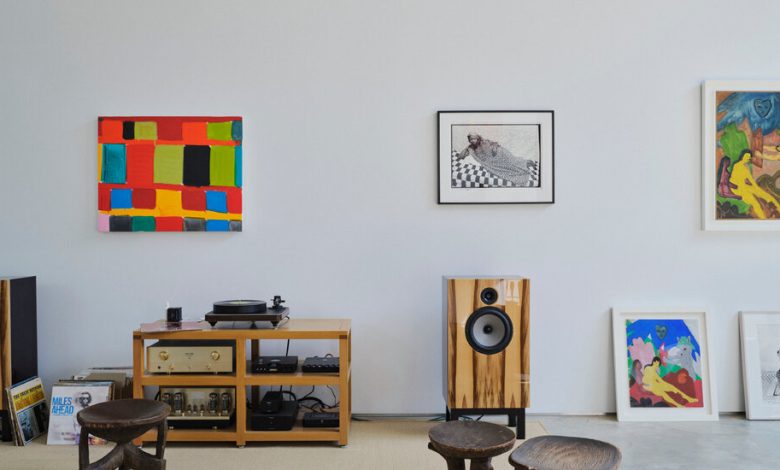For Two Color-Obsessed Artists, a White-Walled Home

IN 1973, THE painter Stanley Whitney moved into a long, skinny loft overlooking Cooper Square in downtown Manhattan. In the course of the next 50 years, he’d meet and marry the artist Marina Adams, who makes rhythmic large-scale paintings in vibrant jewel tones, and together, they’d raise their son, William — all in that loft. For decades, Whitney also used part of the 2,000-square-foot space as his studio, a room without natural light where he painted and drew his abstract works, including his signature gridlike compositions of startling, luminous colors: chlorine blue, taxicab yellow. By 2019, the couple were looking for more space, so their real estate agent took them to Long Island’s eastern end. Though the Hamptons’ open landscapes and light have long attracted artists, perhaps most famously the Abstract Expressionists Jackson Pollock and Lee Krasner in the 1940s, Adams, 63, and Whitney, 77, had never felt an affinity for the area, whose spirit has become markedly less bohemian in recent decades. “We weren’t interested,” Whitney says. “But then she took us to Jack and Manuel’s place and I thought, ‘Oh, I could do this.’”
Jack is the artist Jack Ceglic, 88, and Manuel is his partner, the architect Manuel Fernandez-Casteleiro, 71. Ceglic is best known for designing the interiors of the influential SoHo grocery store Dean & DeLuca (all stainless-steel shelves and white industrial tile) in the 1970s; some 30 years later, he began applying his economical, poetic style to a handful of Long Island properties. During their search for a new home, Adams and Whitney visited Ceglic and Fernandez-Casteleiro’s own house, a hangarlike structure in East Hampton that Ceglic built in 2000 from prefabricated pieces of graphite gray steel, and fell for its open interiors, its views of bushy ferns and sinewy crepe myrtle trees — and, just as significantly, its owners. “It was an instant friendship,” says Fernandez-Casteleiro. Not long after, Whitney and Adams bought an overgrown two-acre plot of land, part of a former plant nursery, on a quiet lane outside the village of Bridgehampton and enlisted Ceglic and Fernandez-Casteleiro to design a dwelling that would feel, in its proportions, like a city loft set down in the countryside. “So it became a collaboration,” says Fernandez-Casteleiro. “We were working, having dinners, getting to know one another.” Like the best relationships, the house that emerged is a continuing act of care and creativity.

Paintings in Whitney’s studio.Credit…Simon Watson. Artwork: (from left) Stanley Whitney’s “Roma 49” (2022), “Summer Wind” (2022), “Monk & Munch 29” (2023), “Untitled” (2022), all © Stanley Whitney
THE ONLY PARAMETER that Whitney and Adams set was that the project must include two bedrooms, guest quarters and a pair of studios. Ceglic and Fernandez-Casteleiro began by visiting the artists’ apartment and their respective studios, then both in Brooklyn, to see firsthand how they painted and lived. “Since we didn’t know what we were going to do,” Ceglic says, “we relied on their images in our heads.” He and Fernandez-Casteleiro learned early on, for example, how much Adams loves nature, and so they committed to preserving as many as possible of the property’s plants, from a huge mature butternut to a vivid purple pokeweed, which now attracts cardinals and warblers.
“We decided to occupy the non-good parts” of the land, says Fernandez-Casteleiro, “and nurture what existed.” That meant positioning the 3,240-square-foot main building at the northeast edge of the plot and the studios, 2,300 square feet each (with an extra 650 square feet at the back of Adams’s to accommodate a simple guest suite), to the west and southeast. It was only the second time Ceglic and Fernandez-Casteleiro had collaborated on a professional project, and each incorporated elements from his own distinct minimalist style. From the outside, the three rectangular buildings are unmistakably Ceglic: barnlike, with gently sloping roofs and walls constructed from black standing-seam steel. Inside, they’re filled with elegant, ingenious touches dreamed up by Fernandez-Casteleiro, including interior plywood doors that swivel on a single pin.
